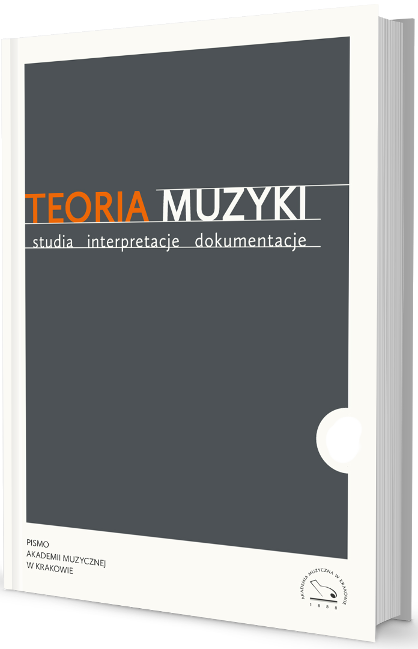Remplissage jako problem teoretyczno-muzyczny
Remplissage as a theoretical and musical problem
Author(s): Levon AkopianSubject(s): Music
Published by: Akademia Muzyczna w Krakowie im. Krzysztofa Pendereckiego
Keywords: remplissage; paradigmatics–syntagmatics opposition; postromantic harmony
Summary/Abstract: The word remplissage (French for ‘filling’ or ‘padding’) is known, at least to Russian readers, first of all due to Tchaikovsky, who used it to label a ‘routine’, secondary material filling the space between themes. Though ‘secondary’, the remplissage is by no means insignificant, at least in a purely quantitative sens: every large-scale form of classical or romantic music contains transitional, connecting, leading passages of various kinds. According to Tchaikovsky’s observation, the post-Beethoven music evolved in the direction of the hypertrophy of such ‘padding’ material. Hence, remplissage deserves to be treated as a noteworthy theoretical issue. In the present article the category of remplissage is examined through the prism of the opposition ‘paradigmatics–syntagmatics’, playing the key role in F. de Saussure’s theory of text structure. Remplissage can be formally defined as a paradigmatically weakened section between structures occupying strong paradigmatic positions.The feeling that the valuable thematic stuff risks to be ousted by remplissage, stimulated the musical revolutions of the early 20 th century, perhaps, to the same degree as the crisis of Romantic harmony. Specific compositional techniques, leading to the minimization of remplissage, were developed within the framework of impressionist and expressionist aesthetics. At the same time any ‘radical’ composer of the last century faced the danger that the music done with the use of new language would be perceived by the audience as a poorly differentiated (paradigmatically undistinguished) remplissage. A number of examples illustrate how this danger was overcome in the works by composers representing different generations and currents. Similar devices used by them independently of each other highlight those peculiarities of the complex contemporary music language that are responsible for its insurmountable (or still not surmounted) paradigmatic ‘insufficiency’.
Journal: Teoria Muzyki. Studia, Interpretacje, Dokumentacje
- Issue Year: VIII/2019
- Issue No: 15
- Page Range: 25-47
- Page Count: 23
- Language: Polish

